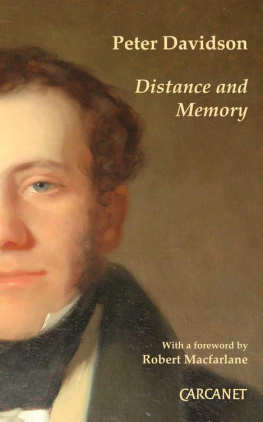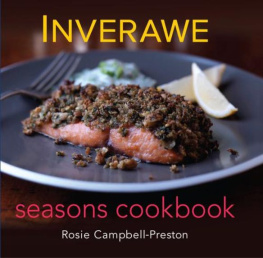Dedication
To Lucy and John Lister-Kaye, my dear friends in the Highlands.

BBC and the BBC logo are trademarks of the British Broadcasting Corporation and are used under licence. BBC logo BBC 1996.
Bloomsbury Publishing Plc
50 Bedford Square
London
WC1B 3DP
UK
1385 Broadway
New York
NY 10018
USA
www.bloomsbury.com
This electronic edition published in 2016 by Bloomsbury Publishing Plc
Bloomsbury is a registered trademark of Bloomsbury Publishing Plc
First published 2016
Text Stephen Moss, 2016
Photographs Laurie Campbell, 2016, with the exception of those listed on page 269
Stephen Moss has asserted his right under the Copyright, Designs and Patents Act, 1988, to be identified as Author of this work.
All rights reserved
You may not copy, distribute, transmit, reproduce or otherwise make available this publication (or any part of it) in any form, or by any means (including without limitation electronic, digital, optical, mechanical, photocopying, printing, recording or otherwise), without the prior written permission of the publisher. Any person who does any unauthorised act in relation to this publication may be liable to criminal prosecution and civil claims for damages.
No responsibility for loss caused to any individual or organisation acting on or refraining from action as a result of the material in this publication can be accepted by Bloomsbury or the author.
British Library Cataloguing-in-Publication Data
A catalogue record for this book is available from the British Library.
Library of Congress Cataloguing-in-Publication data has been applied for.
ISBN: 978-1-4729-1900-7 (HB)
ISBN: 978-1-4729-1901-4 (PB)
ISBN: 978-1-4729-1902-1 (eBook)
To find out more about our authors and their books please visit www.bloomsbury.com where you will find extracts, author interviews and details of forthcoming events, and to be the first to hear about latest releases and special offers, sign up for our newsletters.
INTRODUCTION
Of all Britains wild places, surely none are so beautiful, so scenic, and so special as the Scottish Highlands. Stretching across hundreds of square miles, the exact definition of the region is hard to establish: it includes the Inner Hebrides, but not always the outer isles; Orkney, but definitely not Shetland; as well as the Cairngorm plateau, the valleys of Speyside and Deeside, the Flow Country, Ben Nevis, and the Great Glen.
But the Highlands are about far more than geography: they are also a state of mind. The very name speaks of wildness and wilderness, of towering mountains and deep glens, of fast-flowing rivers and rocky coasts, and above all, of some of Britains most extraordinary and spectacular plants and animals.
Not that Highland wildlife is always easy to see. The place gives up its secrets unwillingly at times, and effort, hard work and a fair amount of luck are needed to see some of the more elusive wild creatures. But what wild creatures! Golden Eagle and Bottlenose Dolphin, Pine Marten and Osprey, Reindeer and Red Deer, Black Grouse and Red Squirrel, Ptarmigan and Capercaillie, the Atlantic Salmon and the rare and well hidden Scottish Wildcat, are just a few of the iconic species found here, some found nowhere else in Britain. They are accompanied by a fabulous supporting cast of birds and mammals, reptiles and amphibians, butterflies and dragonflies and, during the spring and summer, stunning displays of wild flowers.
The Scottish Highlands change not just season by season but also day by day; but in this book I have chosen as in the accompanying BBC TV series to focus on the transformations that take place, slowly but surely, over the course of a calendar year. The book is divided into four seasons, each of which is a transition in itself: from winter to spring, spring to summer, summer into autumn and finally autumn back to winter, as the natural year comes full circle once again. It is a story of hardship and opportunity, of wonder and surprise, and above all of how nature finds a way in even the harshest of conditions.
In between the stories of the wild creatures that make their home in this glorious part of the world, there are profiles of some of the many people who have chosen to live alongside the wildlife here. They love the Highlands as, if you have already been here, you will easily understand. If you havent been yet, this book is an invitation to visit, and to experience the wonders of Scotlands wild heart for yourself. Youll be glad you did!
Stephen Moss


WINTER ON THE HIGH TOPS

The Cairngorm Reindeer have lived on the mountain for more than 60 years, since being brought here from Sweden.
The Reindeer herd trudges through the deep, crisp snow, heading towards the distant summit of the mountain. An icy wind cuts through the chill January air, while a glowering grey sky occasionally erupts with flurries of flakes; little miracles of nature, each unique hexagonal fragment of snow drifting down to join millions of others on the ground.
All around, a sea of white, broken only by the occasional grey boulder, the huge, jagged outline of the mountain itself and these sturdy, patient animals perfectly adapted to this Arctic scene.
Yet this is not Lapland, but the Cairngorm plateau in the Highlands of Scotland. At 57 degrees north, more than 1,000 km (620 miles) south of the Arctic Circle, this place is a long way from the Reindeers normal home. For the Reindeer is a true Arctic animal, perfectly adapted to life on the barren, frozen tundra of Scandinavia and Siberia, and across the huge expanses of Alaska and Canada, where the species is known as Caribou. So what on earth are these animals doing here?
The story of the Cairngorm Reindeer herd goes back more than 60 years, to 1952, the year that Queen Elizabeth II came to the throne, and to a visionary man named Mikel Utsi, a Swedish Reindeer herder. He and his wife, Dr Ethel Lindgren, brought eight animals across the North Sea to Scotland, and put them in a fenced enclosure near Aviemore, before eventually releasing them on the slopes of Cairn Gorm. Later, more Reindeer were brought over, and today there are around 150 animals living a semi-feral lifestyle here.
Of all the animals you might expect to encounter in the Scottish Highlands, the Reindeer is one of the least expected, yet also one of the most appropriate. It is not usually considered to be a native British animal, yet it has perfectly good credentials to be regarded as one. Less than 10,000 years ago, towards the end of the last ice age, wild Reindeer roamed all over Britain as far south as Kent. Although this may seem a long time ago in our human history of these islands, it is but a blink of an eye in geological and natural history terms.
The Reindeers story reminds us that wild creatures have always come and gone from the Highlands, and that what we see today is only a snapshot of the wildlife that has lived here in the past, and what might be found here in the future.












